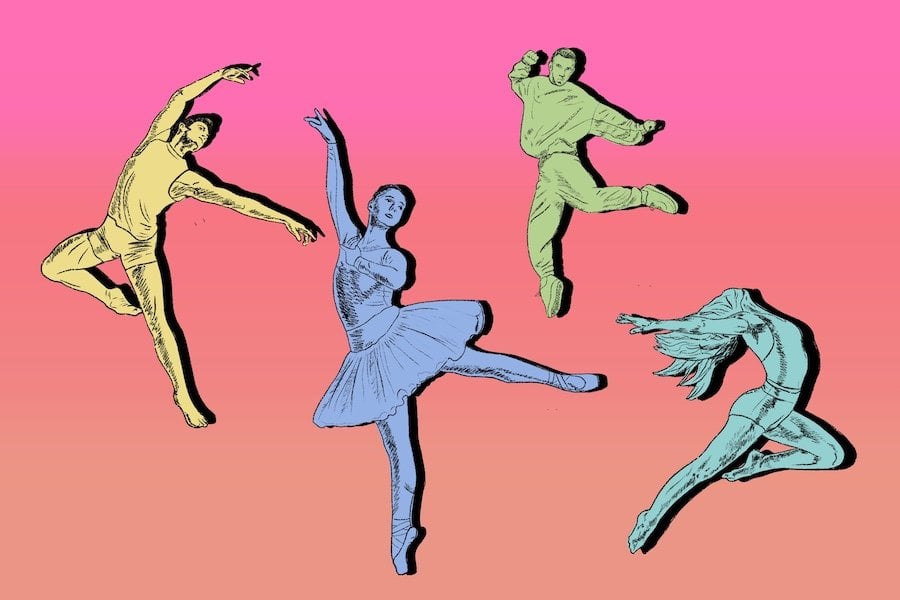Engineering and theatre majors prepare to swing dance together for emotional growth
Daily file illustration by Carly Schulman
Communication Prof. Siegenfeld will offer his popular swing dancing course for engineering and theatre students this winter.
November 8, 2021
This winter, a small group of McCormick and Communication students will gather together twice weekly in a Wirtz Center dance studio to practice emotional intimacy, physical touch and, eventually, swing dancing.
The class is co-listed as Partnered Swing Dancing in the School of Communication and Whole-Body Thinking in the McCormick School of Engineering. It takes a radical approach to dance, education and community.
Concerned with McCormick students’ hypercompetitiveness, Assistant Dean for Undergraduate Engineering Joe Holtgrieve originally brought the idea to Communication Prof. Billy Siegenfeld, who opened the class to Communication students to further build community.
“Northwestern is a school that brags about its excellence,” Siegenfeld said. “It’s an interesting tension between that psychological climate and the promise of community. These issues have gotten in the way of people dealing with people in an egalitarian way.”
The course focuses heavily on tuning into the body’s natural rhythms and needs, both individually and in concert with others. The first three weeks of the class do not involve dancing in the traditional sense at all, but rather emphasize the basics of physical and emotional presence through actions like bouncing to music while holding a partner’s hand.
Siegenfeld’s pedagogical philosophy, “standing down straight,” uses Newton’s third law of motion in a bodily context to explore how one can naturally use gravity to stand in a relaxed manner.
“We’re reprioritizing relaxation. We’re giving into gravity before we launch ourselves forward into space with energy, with weight, toward another human being,” Prof. Siegenfeld said.
To aid in this complex process, students who have previously taken the class re-register as peer mentors.
McCormick junior Ilan Gasko took the course his freshman year and is currently preparing to mentor students taking the class next quarter.
“We’re there to offer a different perspective,” Gasko said. “But we’re taking the class, as well. So, we’re learning the things we didn’t pick up on the first time, or we’re getting more practice with the philosophy the second time around.”
Because the course requires sustained emotional and physical engagement, Siegenfeld screens each student interested in the course through informational sessions and interviews to ensure they will enjoy the class. This process, coupled with a high demand for the class and a capacity of 12 students due to COVID-19 restrictions, has made the class a scarce commodity.
Participation is essential to the course, given its emphasis on connection. Along with her co-peer mentors, Communication junior Sami DeVries works to create a safe space for students to be vulnerable.
“We make sure everyone feels like they’re in charge of what they do and don’t do and how they engage in class,” DeVries said.
The final project for the course has students perform partnered swing dances in the center of a circle of their peers. The dances range from complex choreography to simple movements on beat.
Both Gasko and McCormick and Communication senior Maddie Durmowicz, another peer mentor, agreed that the final was the highlight of the course.
“The transition from seeing everyone at the beginning and then seeing everyone at the end is truly remarkable,” Durmowicz said. “We come into a new space, try something completely new and then have this wonderful community at the end.”
Email: [email protected]
Twitter: @AlexaCrowderRelated Stories:
— The Garage’s study find personality traits of highly successful entrepreneurs in new study
— Theatre students, professors explore online acting classes


